In this guide
Hide menuCase study: Mobilising communities to tackle child, early and forced marriage in Bangladesh and Nepal
Show sectionsCase study: Mobilising communities to tackle child, early and forced marriage in Bangladesh and Nepal
- Author: ESubden
CARE’s Tipping Point project in Bangladesh and Nepal
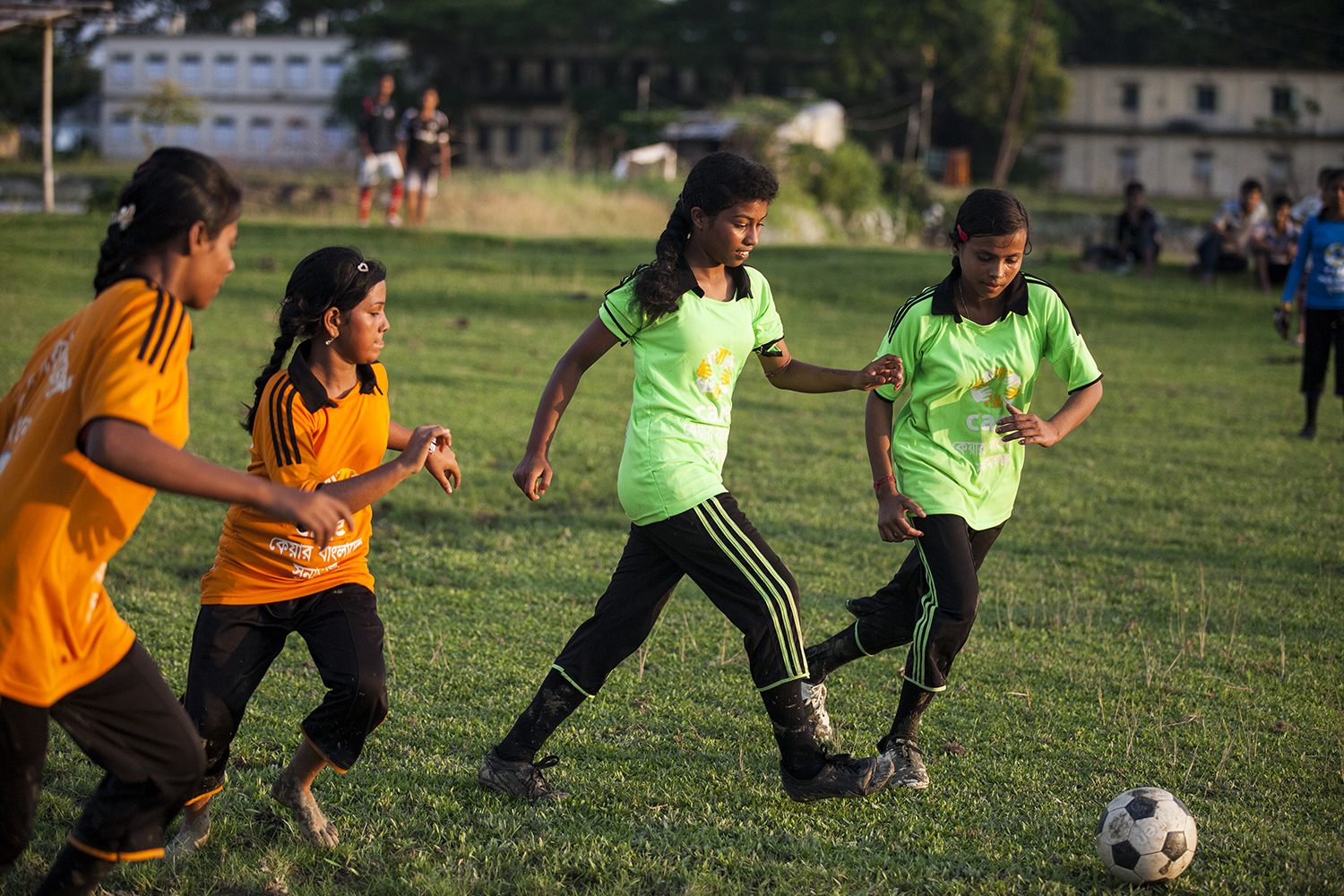
"Earlier, we, the girls, didn’t play football, we couldn’t even go out of our house. But after joining the Fun Centre [a safe space for adolescents to meet, set up by Tipping Point], now we can play football… At the beginning, villagers used to say bad things to us… Not everybody got permission from their parents. My father didn’t forbid me to play football, but my mother did. So, my father made other villagers understand the issue... Then… other parents let their daughters play.
At first, we played football in our village… Then we played in other villages too. We went to play at the district level and won the championship trophy… Now the villagers do not criticise the girls for playing football… Rather… they are committed to support us in every way and inspire us."
- Adolescent girl, age 15-years-old, Bangladesh.
CARE’s Tipping Point project
Tipping Point addresses the root causes of child, early and forced marriage (CEFM) by working with girls, boys, parents, community leaders and religious leaders in marginalised communities in Bangladesh and Nepal. The three-phase project spanning 10 years supports social norms that promote gender equity, through activities at the community level. It also aims to generate evidence and engages in advocacy and information-sharing at the national and international levels.
Why use a social norms approach?
Through in-depth community participatory analysis, the first phase of the Tipping Point project (2013–17) confirmed that alongside other factors, gendered social norms play a big role in driving CEFM in target communities (the Terai in Nepal, and the haor areas in Bangladesh – both with high rates of child marriage).
The project used programme design principles for engaging with social norms change (see below). These principles helped CARE devise programming activities to target key norms linked to CEFM, such as girls’ mobility and presence in public spaces, their responsibility for domestic work, and the dowry system. Participants charted their own experiences using PhotoVoice – a participatory research method in which people take photos to record their everyday life experiences during the project.
Programme design principles for engaging with social norms change:
1. Find early adopters.
2. Build support groups of early adopters.
3. Use future-oriented positive messages.
4. Open space for dialogue.
5. Facilitate public debate.
6. Expect by-stander action.
7. Show examples of positive behaviour in public.
8. Map allies and ask for their support
Social norms innovation briefs
Tipping Point developed a series of social norms innovation briefs to fill a knowledge gap. The briefs aimed to share examples of how to operationalise social norms theory in programming activities, to make it easier for other practitioners to adapt and use the ideas. The innovations were as follows.
Bangladesh
- Football for girls: Girls' participation in sport can help to change social norms.
- Tea stall conversations: A space for men and boys to discuss gender roles, girls’ rights, and CEFM.
- Amader Kotha: Adolescents use street drama and dialogue to challenge existing social norms and show positive alternatives.
- Amra-o-Korchi (‘We are also doing’): Girls and boys switch roles at home to challenge gendered social norms.
Nepal
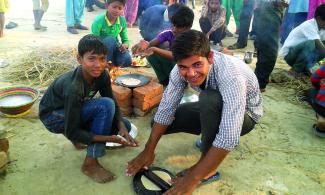
- Intergenerational dialogues: Bridging the communication gap between adolescents and their parents so parents understand adolescents’ aspirations.
- Raksha Bandhar: Introduces a change to the traditional ritual of a sister tying a thread around a brother’s wrist and asking him for protection; now, brothers also tie a ribbon around their sisters’ wrist and both vow to practice gender equality and pursue their dreams.
- Street drama: Girls and boys perform street dramas to challenge social norms around dowry and early marriage and show the benefits of investing in girls.
Activities that had the greatest impact were football competitions for girls, cooking competitions for boys and men, and street dramas and intergenerational dialogues with community members.
The uniqueness of the Tipping Point approach in addressing child marriage derives from the in-depth understanding of the gendered social norms driving CEFM in each context. This allowed the programme to develop targeted, context-specific activities to single out a range of social and structural factors that must be jointly addressed in order to achieve the tipping point that will shift the root causes of CEFM.
Findings
The phase 1 evaluation found that the project succeeded in loosening some of the norms that restrict girls’ opportunities and autonomy. Adolescent girl participants in both countries noted that the biggest change occurred in their families’ and communities’ expectations of them: they were seen as ‘good girls’ by displaying newly approved characteristics – such as speaking up – compared to girls who did not join Tipping Point groups and did not display these behaviours. Members of Tipping Point groups also reported gaining greater freedom to move around their village, ride bicycles, play sports outdoors, work with boys to organise community events, and express their opinions. Girls did face some social disapproval through gossip and criticism of their non-traditional behaviours, but with the support of their parents and each other, they disregarded it, demonstrating resilience in the face of sanctions for behaviour considered ‘outside the norm’.
The evaluation also found some positive changes in adolescent boys’ attitudes and behaviours, including behaviour that challenged traditional norms of masculinity and also demonstrated a growing understanding of reciprocity within marital relationships more generally. For example, in Nepal – through group exercises to map girls’ and boys’ time use and public competitions for boys in cooking and sewing – boys came to understand that their sisters had a greater burden of work and that it was often skilled work. The boys began taking on more household work to allow their sisters time to study and relax, and even advocated for their sisters in discussions with parents. They supported girls in other ways too – for instance, participating in street drama about child marriage, dowry violence, and other issues, and joining girls in their advocacy work.
In Nepal, there were also signs of some changes in the economic considerations that families take into account when thinking about marrying their daughters off. Parents are increasingly focusing on the economic reasons for marrying, and family finances (such as lower ceremonial costs and dowry prices when girls are educated or earning an income) were beginning to support delayed marriage. In some cases, it appeared that early marriage ‘doubled the expenditure’ because gauna (when a girls moves to her husband’s house, which may occur some time after a formal marriage ceremony) and marriage took place separately; whereas costs were reported to be lower when marriage and gauna happened at the same time.
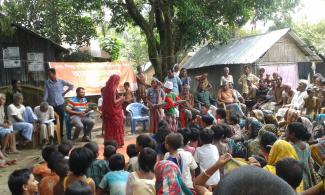
Lessons
- Addressing social norms may not need an entirely new programming approach; in some cases, it might just mean tweaking some existing activities. For instance, in the Tipping Point project, people are already supporting girls’ choices and opportunities (as per the social norms design principles (1) early adopters, and (7) examples of positive behaviour).
- As in Bangladesh and Nepal, in many other contexts gendered social norms are a critical driver of CEFM; but they are only one part of the puzzle. Policy-makers and practitioners should not see changing norms as a ‘silver bullet’ solution, but as a strategy that complements other actions to deliver change.
- The gendered social norms that drive CEFM vary according to context, so it is essential to take the time to understand which norms are driving CEFM in order to develop targeted activities. For instance, among Hindu populations in the Southern belt of Nepal, where both girls and boys are married off during childhood, the age at which gauna happens requires more attention since it indicates when the marriage is being consummated. During those years in which girls and boys are married but have not started living with their spouse, they are teased and mocked by classmates for being married, and sometimes even drop out of school. Different interventions may be required for Hindu populations where gauna practices are common, while in other regions of the country, depending on local culture and traditions, the same project might take a different approach. (To find out more, see the Tipping Point report The Cultural Context of Child Marriage in Nepal and Bangladesh.)
By Yuleidy Merida, CARE USA
Latest resources
Diagram/Infographic
14 September 2018
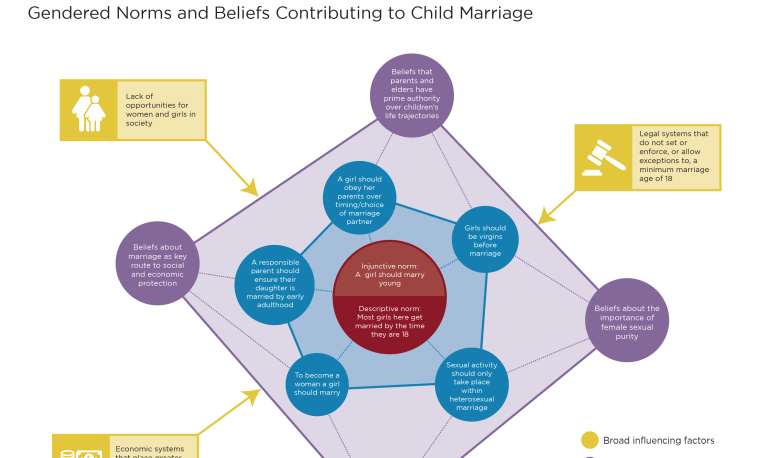
1 January 2012
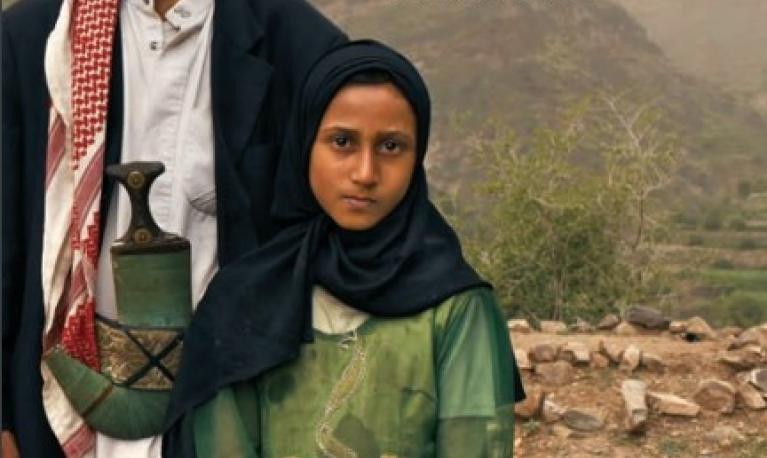
7 November 2018